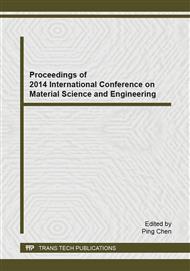p.3
p.7
p.12
p.18
p.23
p.27
p.36
p.41
Study on Infiltration Characteristics and Stability of Excavated Loess Slope in an Industry Site
Abstract:
In industrial construction of loess area, rainfall is one of the important factors inducing excavated slope instability. Take an industry site excavated loess slope in northern Shaanxi for example, using Geo-studio in steady flow state to analyze infiltration characteristics and stability of a loess slope. The results show that: (1) The influence of the X direction maximum locate at the free face of slope foot, Y direction maximum locate at the top of slope. (2) The upper slope larger permeability coefficient, the lower the permeability coefficient is smaller, aquiclude almost have no permeability, shows that the slope is loose soil, particles with skeleton structure, easy water infiltration, the farther down the soil compaction degree is high, the worse the infiltration capacity into the water, the permeability coefficient is smaller. (3) It is easy to produce water flow in aquiclude and slope toe. Then, it soften soil, reduced the shear strength of the soil. It can explain that aquiclude and free face on slope foot always is the structure plane shear outlet of slope.
Info:
Periodical:
Pages:
12-17
Citation:
Online since:
October 2014
Authors:
Keywords:
Price:
Сopyright:
© 2014 Trans Tech Publications Ltd. All Rights Reserved
Share:
Citation:


